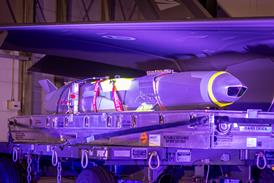The Boeing 737 series no longer complies with the "intent of the [original US Federal Aviation Administration] certification requirements", the US National Transportation Safety Board (NTSB) has alleged in a recommendation to the FAA. The Board urges acceleration of a rudder-system modification programme now under way on the aircraft following two fatal crashes linked to the rudder system.
The NTSB has warned that 737 rudder reversal, leading to loss of control, "-can no longer be considered an extremely improbable or an extremely remote event". The agency says that its conclusion on certification follows further rudder power-control unit (PCU) data analysis.
Uncommanded rudder hard-over is acknowledged by the NTSB as the possible cause of two fatal US 737 accidents: the 3 March, 1991, United Airlines Colorado Springs crash, and the 8 September, 1994, USAir (now US Airways) Pittsburgh accident. Also cited is a non-fatal 9 June, 1996, "roll/yaw upset" incident involving an Eastwind Airlines 737-200 on approach at Richmond, Virginia. The Pittsburgh and Richmond investigations continue. Meanwhile, the NTSB says: "The 737 rudder system does not provide the same level of safety as on similar transport-category aircraft."
Boeing has responded, saying that the resulting NTSB recommendations are "basically the same as those under way" (Flight International, 22-28 January). The three new recommendations, briefly, are that the FAA should:
- require quick installation of a redesigned main rudder PCU on 737s to preclude rudder reversal and meet certification requirements. At present, the airworthiness directive (AD) is still only a proposal, and three years is normally allowed between proposal and implementation;
- advise 737 pilots that they could get a reverse-rudder response when they apply rudder at a high rate;
- require Boeing to develop operational procedures for dealing with an uncommanded 737 rudder hard-over, and require airlines to include these in their training.
Boeing is already designing a new PCU, and the FAA has issued basic guidance to pilots about problems with the 737 rudder system after earlier recommendations from the NTSB. Following additional analysis, however, the NTSB is now pressing the FAA to require fast retrofit of the new-model PCU, because Boeing/ NTSB tests have determined that, when the PCU's servo control-valve secondary slide has jammed in the servo-valve housing, this "-may not be detectable during normal operations, because the movement of the secondary slide occurs only on the input of a high-rate rudder command". If it does jam, however, a high-rate rudder-pedal input can lead to control reversal, says the report, so the agency wants information to pilots to be more comprehensive.
The NTSB's allegation that the 737 series no longer meets original certification requirements evokes the principle that no single failure should lead to loss of control: jamming of the PCU slide is a single failure. Also, contrary to Boeing's original claim that use of the aileron could overcome the effects of a rudder hardover, the NTSB says that, at certain airspeeds and configurations, it cannot.
The NTSB's research concludes that the current AD requiring periodic checks for PCU secondary slide jamming "-does not ensure that it will not become jammed before the next inspection"; and that even test pilots, faced with control reversal, are unable to recognise it and react correctly.
Source: Flight International























